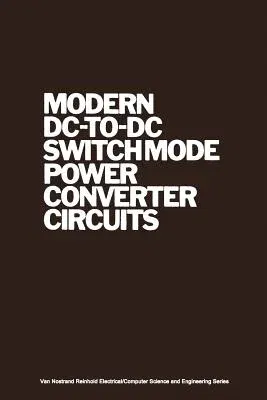R Severns
(Author)Modern DC-To-DC Switchmode Power Converter Circuits (Softcover Reprint of the Original 1st 1985)Paperback - Softcover Reprint of the Original 1st 1985, 21 April 2014

Qty
1
Turbo
Ships in 2 - 3 days
In Stock
Free Delivery
Cash on Delivery
15 Days
Free Returns
Secure Checkout
Part of Series
Van Nostrand Reinhold Electrical/Computer Science and Engine
Print Length
342 pages
Language
English
Publisher
Springer
Date Published
21 Apr 2014
ISBN-10
9401180873
ISBN-13
9789401180870
Description
Product Details
Author:
Book Edition:
Softcover Reprint of the Original 1st 1985
Book Format:
Paperback
Country of Origin:
NL
Date Published:
21 April 2014
Dimensions:
22.86 x
15.24 x
1.91 cm
ISBN-10:
9401180873
ISBN-13:
9789401180870
Language:
English
Location:
Dordrecht
Pages:
342
Publisher:
Weight:
485.34 gm

